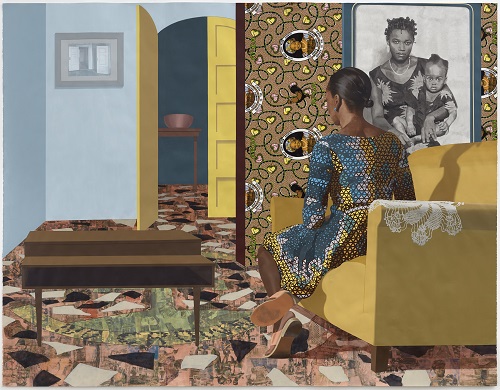I am ill as I write this, a situation I attribute to taking public transport now that winter has arrived. Instead of cycling – a kind of mobile hermeticism – I share Berlin’s warm and scarcely ventilated tube carriages with other bodies. Moving through the city’s underground network as one unruly organism, we travellers constantly trade infections. To pinpoint the initial point of origin – who or what made us sick, when, and if it could have been avoided – is a fruitless task. Where would we even start? Everyone could be blamed, and also no one.
Across the Western world, the bitter medicine of austerity is making many of us sick. Depression and anxiety are commonplace, and thinking about the future often triggers a pervasive sense of dread. Sickness Report (2018), an exhibition by Czech artist Barbara Kleinhamplová currently on show at Berlin’s SAVVY Contemporary, begins with the idea of a diseased public sphere. The exhibition comprises a cinematic, dual-screen film of the same title, set at sea; video footage detailing the labour involved in ship production; an array of objects along a table – anti-depressant pills, bones and jigsaw pieces – that read like evidence; and three pseudo-corporate diagrams projected onto the gallery walls.
The titular film unfolds aboard a small ship, and cuts intermittently to a medicine factory, where workers watch a crowd of pills hurtling down an assembly line. Sitting on a bench made from a ship construction mould, I watch the onscreen vessel drift on a featureless expanse of sea. The narrator, a male anthropologist, tells us that the ship is defective, as is its crew. They have succumbed to a mysterious malaise known as the ‘Big Sickness’. Unable to navigate, they are now at the mercy of the tide, but they have begun to infect the surrounding waters. On a nearby wall, a pair of projected diagrams shows another seafaring vessel. Its parts have been fastidiously labelled, but by an economist, rather than a shipbuilder. ‘Privatisation’ and ‘corporate spirit’ are written where hull and stern should be, while other components are labelled ‘productivity’, ‘medication’ and ‘gig-economy’. Kleinhamplová makes it clear: this ship is a symbol of capitalism.
On the surface of things the crew look healthy enough, but pay attention and you will see that they are all suffering in isolation. One man struggles to complete an apparently impossible jigsaw puzzle of the ocean, comprised of myriad blue tiles. Others sit hunched below deck, rummaging for pills in transparent plastic bags. As the anthropologist observes, the group are ‘too numb to truly notice the source of their unhappiness’. A central symptom of their malady is what political theorist Mark Fisher called ‘capitalist realism’ in his book of 2009: the failure to think of an alternative way of life. Kleinhamplová’s crew cannot imagine, let alone organise, a way out of the sorry situation in which they are caught. And, while at first the anthropologist describes his subjects with healthy detachment, eventually he notices himself succumbing to the illness too.
Kleinhamplová’s allegory draws heavily from the Ship of Fools, or Narrenschiff, the idea famously used by Michel Foucault in Madness and Civilisation (1961), a prison vessel where the mentally ill were reputedly sent during the Middle Ages. Foucault understood the ship as a means of dealing with the philosophical and social uncertainty that accompanied the ending of an epoch. The so-called ‘madman’ came to embody this uncertainty in the eyes of the authorities, and as such they were physically removed from society. Perhaps today, as the world lurches towards populism, we are also poised at the beginning of a new epoch, and our times require its own set of fools.
Projected elsewhere on the gallery walls is a digital illustration of a man sitting upright at a desk. Behind him Kleinhamplová had drawn a semi-circular scale that moves from ‘amnesia’ at one extreme, to ‘DSM-5′ at the other – the latest edition of the infamous Diagnostic and Statistical Manual of Mental Disorders, published by the American Psychiatric Association, a manual for classifying mental disorders, and which is used by US clinicians, pharmaceutical companies and insurance firms alike. Performing the role of the gauge, the sitting man aligns with ‘irrationality’, suggesting a kind of madness. And yet, he also appears as an ideal worker, alert at his work station – an embodiment of the neoliberal logic that champions productivity over sanity, and demands that its subjects keep on medicating, to make sure they can work some more. Sickness Report‘s picture of contemporary society is necessarily bleak. Back on the ship of fools, the film loops and nothing changes: nothing is likely to change any time soon.









